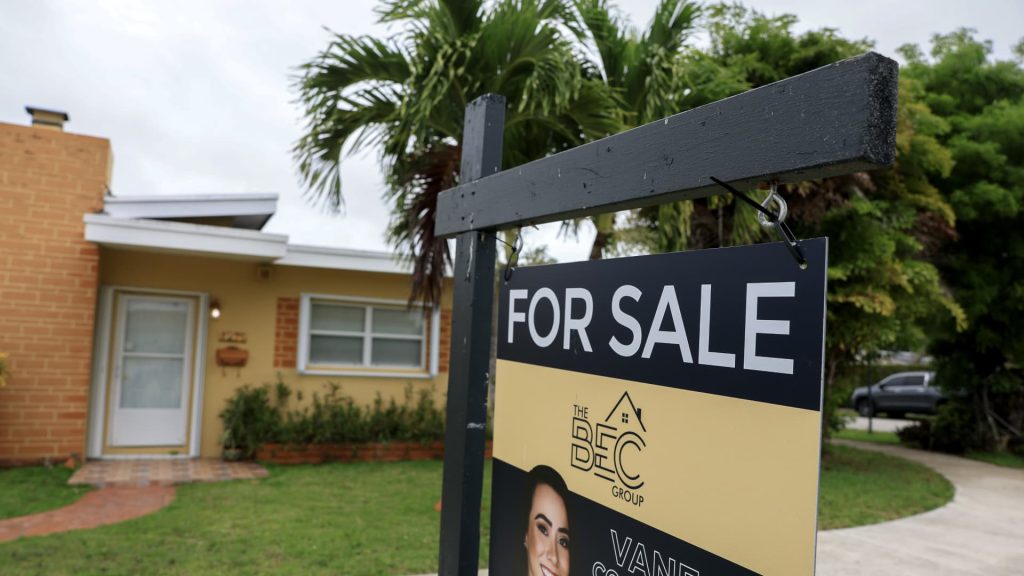In a recent update from the Mortgage Bankers Association, mortgage rates decreased slightly last week, but this reduction hasn’t stimulated demand as anticipated. The total mortgage application volume fell by 3.9% compared to the previous week, indicating persistent challenges in the housing market. Despite a year-over-year increase in some purchase applications, the overall trend remains sluggish, underscoring the complexities of the current economic landscape.
| Article Subheadings |
|---|
| 1) Overview of Mortgage Rate Trends |
| 2) Refinance and Purchase Application Insights |
| 3) Factors Influencing Current Demand |
| 4) Market Conditions and Supply Dynamics |
| 5) Anticipating Future Movements |
Overview of Mortgage Rate Trends
Mortgage rates have seen a marginal decline recently, with the average contract interest rate for 30-year fixed-rate mortgages dipping to 6.92% from 6.98%. This slight reduction comes in a context where the rates have maintained a narrow range over the past two months. The Mortgage Bankers Association’s seasonally adjusted index reported a 3.9% decrease in total mortgage application volume, indicating a reluctance among buyers to capitalize on the dip. This trend reflects a cautious market where potential homeowners are waiting for even more favorable conditions before making significant financial commitments.
Refinance and Purchase Application Insights
The applications to refinance existing home loans fell by 4% last week, despite being 42% higher than the same period last year. This high percentage year-over-year stems from last year’s mortgage rates being 15 basis points higher. The drop in recent refinance applications raises concerns as it suggests potential borrowers are hesitating to engage in refinances unless rates drop substantially further.
“Refinance activity fell across both conventional and government segment,”
noted economist Joel Kan, highlighting that the average refinance loan size is at its lowest since July 2024. Meanwhile, purchase applications also fell by 4%, though they still represent an 18% increase compared to the same week last year, showcasing the dichotomy between past and current market dynamics.
Factors Influencing Current Demand
The housing market’s current lethargy can largely be attributed to several key factors. First, the sluggishness seen in closed sales indicates less overall movement in home transactions, exacerbated by rising interest rates, inflation, and economic uncertainties which have led many to defer their homebuying decisions. Additionally, potential buyers may be concerned about overextending their finances in a volatile economic climate. The principal driver of increased purchase demand, however, appears to be an increase in housing supply, which has reached its highest level in five years. Yet even with this added supply, closed sales are still trailing behind last year’s metrics.
Market Conditions and Supply Dynamics
The current real estate climate is characterized by a complex interplay of supply and demand. While the influx of homes for sale offers greater options for buyers, it hasn’t translated into proportional sales activity. Industry experts indicate that increased supply should ideally foster stronger sales figures; however, apprehension surrounding economic conditions has limited buyer enthusiasm. As the market adapts to these conditions, closed sales continue to lag behind expectations, highlighting a disconnect between available inventory and actual transactions.
Anticipating Future Movements
Looking ahead, industry analysts are closely monitoring forthcoming economic indicators that could influence mortgage rates and housing demand. A key event on the horizon is the release of the monthly employment report, which is anticipated to bring new insights into economic health and consumer confidence. The effects of this report could be substantial, potentially leading to shifts in rate movements and altering the demand landscape in the housing sector.
| No. | Key Points |
|---|---|
| 1 | Mortgage rates fell slightly, with the 30-year fixed-rate mortgage averaging 6.92%. |
| 2 | Mortgage application volume decreased by 3.9% last week, indicating reduced buyer activity. |
| 3 | Refinancing applications fell 4%, although they remain 42% higher than last year. |
| 4 | Increased housing supply has not yet translated into proportional sales due to buyer hesitance. |
| 5 | The upcoming monthly employment report is anticipated to influence future mortgage rates and demand. |
Summary
The slight decline in mortgage rates during the past week has not spurred the anticipated increase in mortgage applications, indicating ongoing challenges in the housing market. While an increase in housing supply presents opportunities for buyers, prevailing economic uncertainties continue to dampen demand. As the landscape evolves, upcoming economic indices, particularly the employment report, will be crucial in shaping future market dynamics and potentially steering mortgage rates into new territories.
Frequently Asked Questions
Question: What is the current average mortgage rate?
The current average rate for a 30-year fixed-rate mortgage is approximately 6.92%.
Question: How has refinancing activity changed recently?
Refinancing applications decreased by 4% last week, although they are still higher than the same week last year.
Question: What factors are affecting home sales currently?
Home sales are impacted by a combination of increasing inventory levels and economic uncertainties that are causing potential buyers to hesitate.
